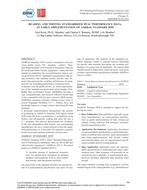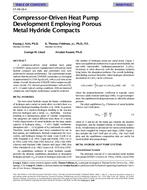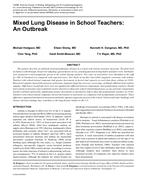A recently developed analytical formula for the self-regulation ability of low temperature water-based floor heating systems is experimentally validated. By controlling the feed-forward supply temperature, keeping it rather constant during the year, any thermal perturbance is counteracted by a corresponding shift in the opposite direction of the supplied heat flux. This will give a more stable indoor temperature and an enhanced use of heat gains.
Buildings with small heat losses, such as well insulated single-family houses, in combination with a high equivalent thermal conductance from the supply of the pipe circuit towards the interior, yield a high self-regulation utilization factor. Hence, selfregulation is an integrated phenomenon that depends on both the design of the floor heating element and the building. The theory behind self-regulation floor heating is outlined and an experimental setup using climate chambers is presented. Both light and heavy floor heating systems with embedded hydronic pipes are studied. Steady-state and dynamical tests are used in the validation.
Citation: Thermal Performance of Exterior Envelopes of Whole Buildings XIII, Conference Papers
Product Details
- Published:
- 2016
- Number of Pages:
- 8
- Units of Measure:
- Dual
- File Size:
- 1 file , 700 KB
- Product Code(s):
- D-BldgConf16-33


